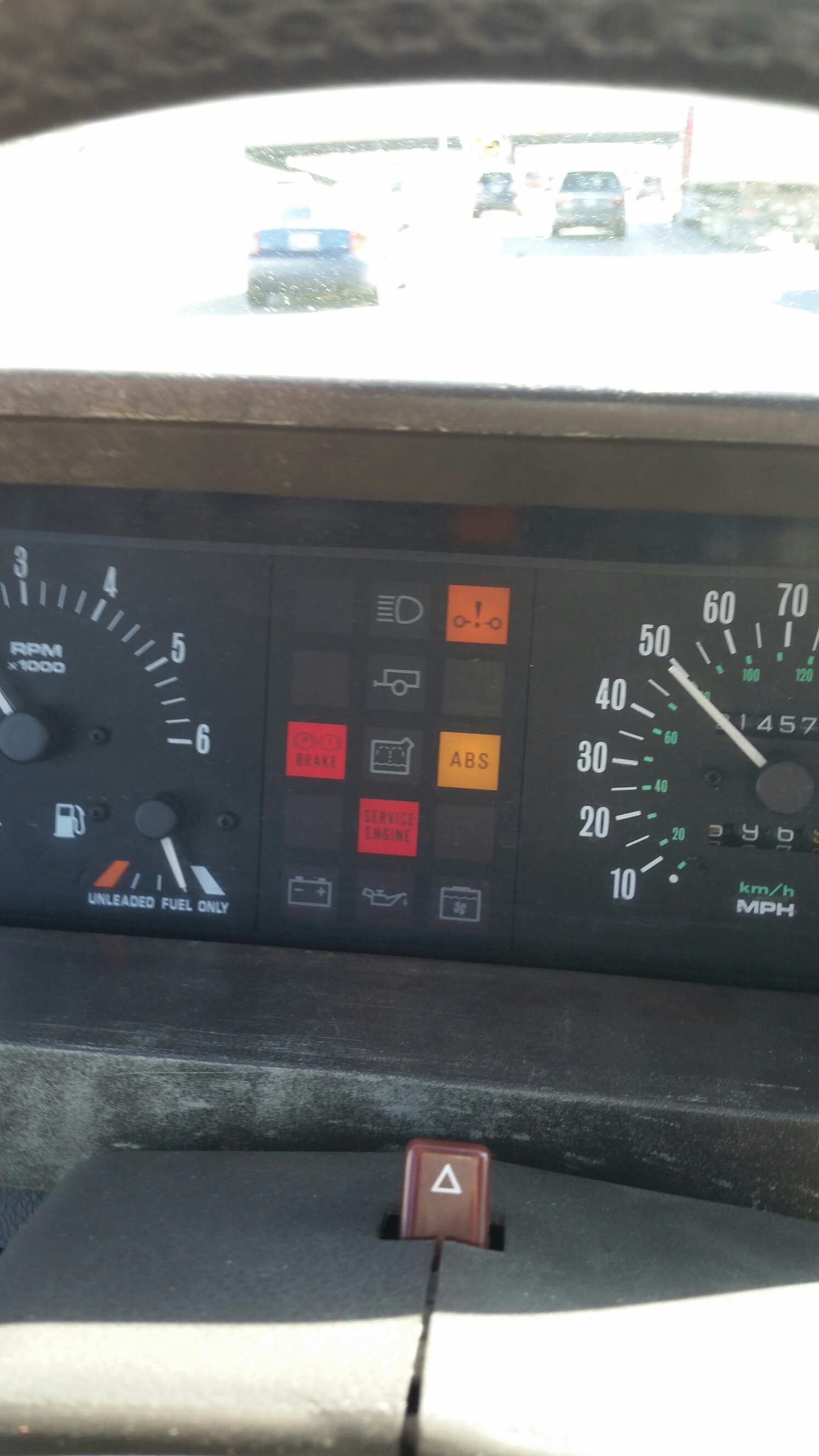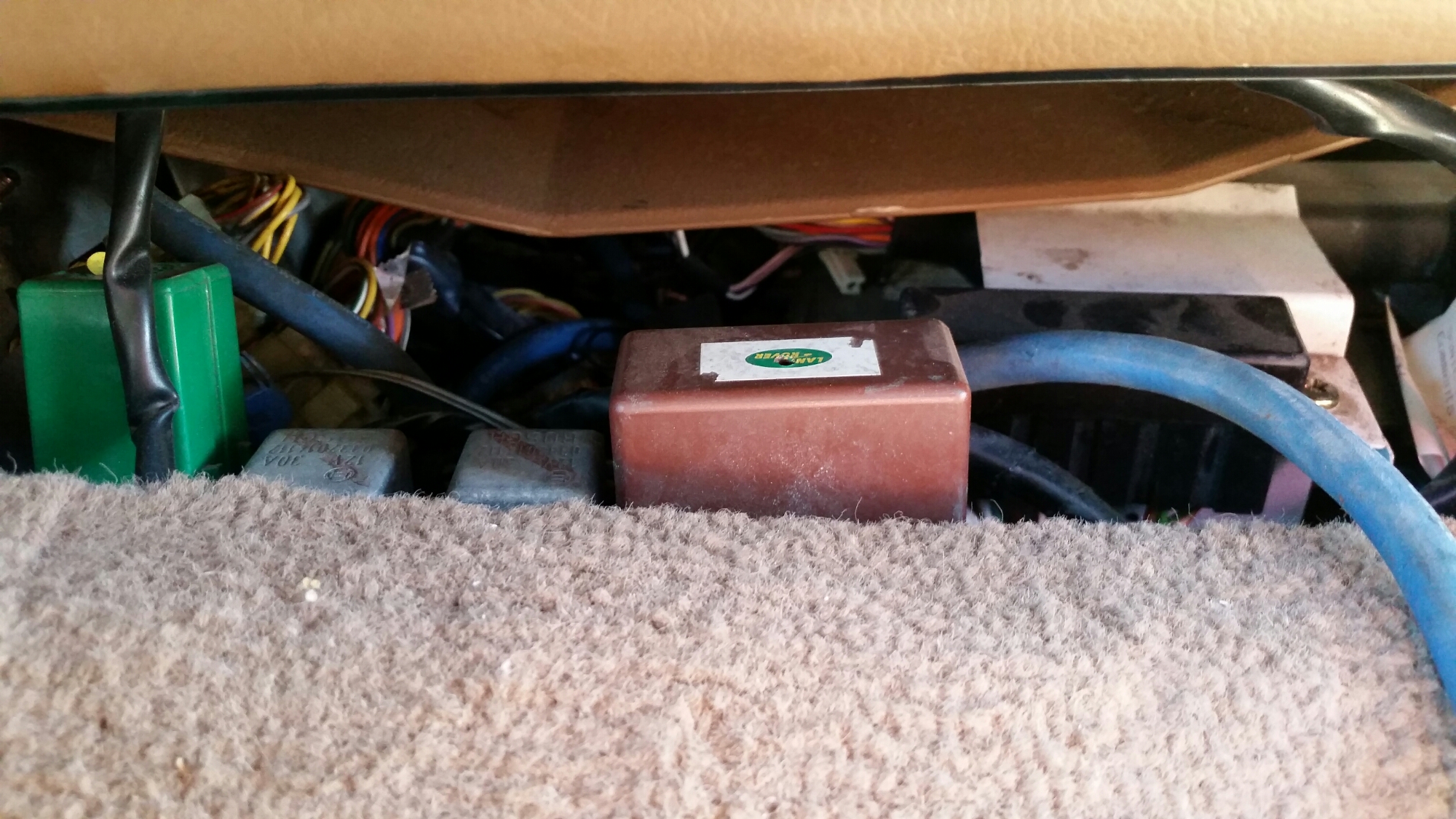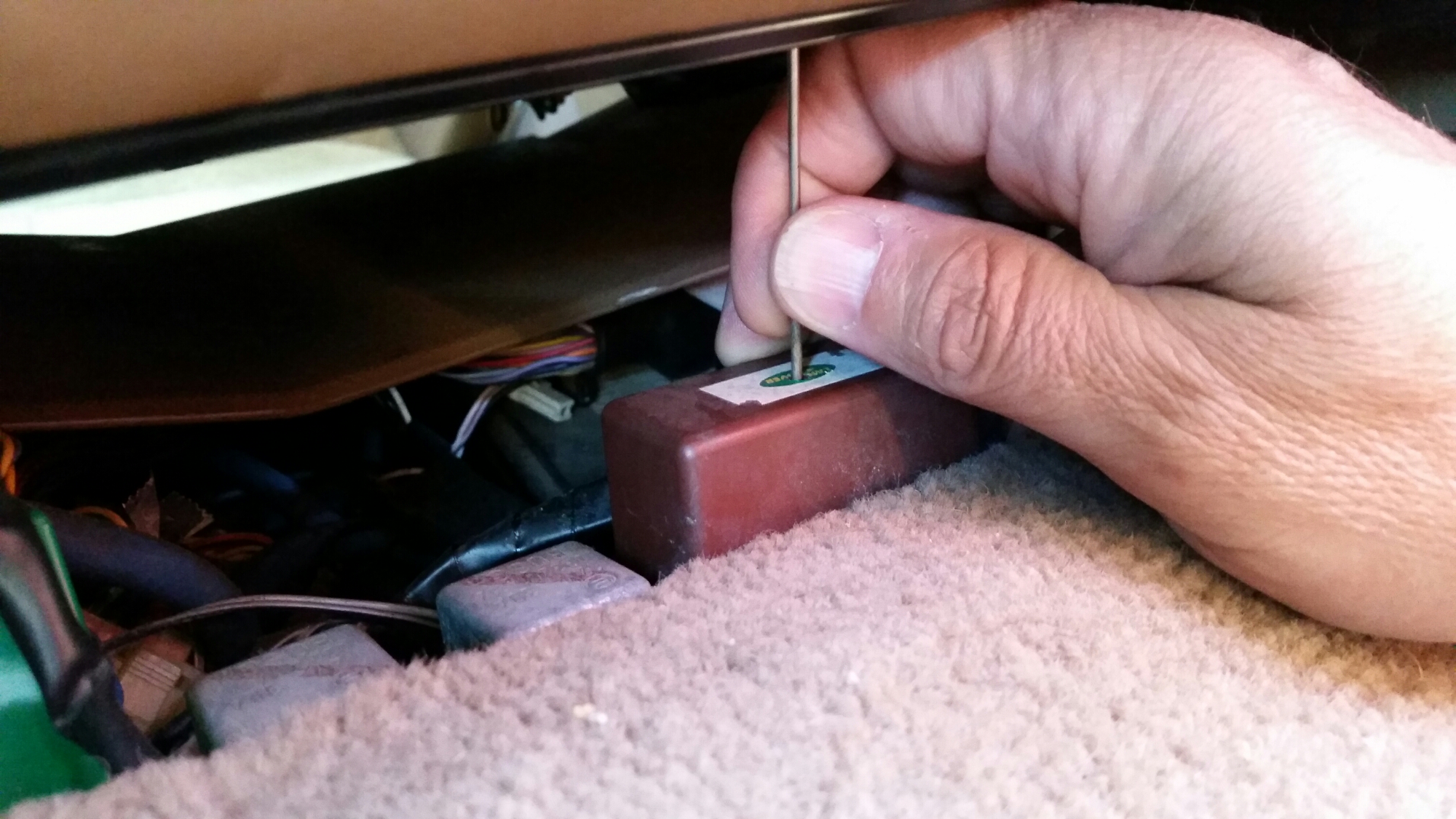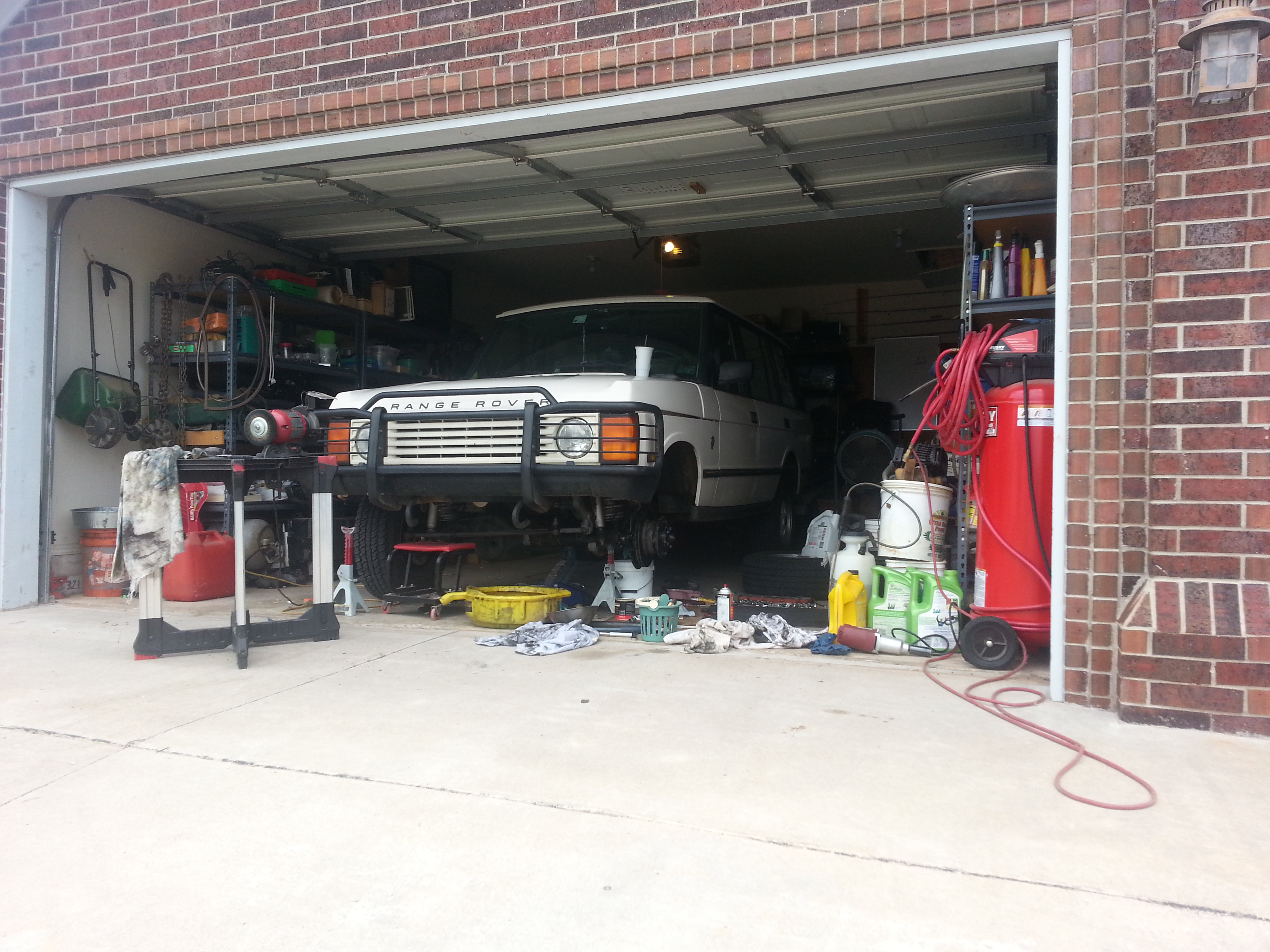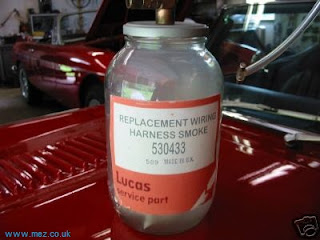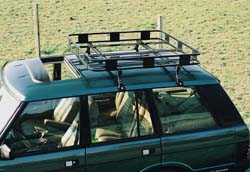My ABS light has been on so long I can’t remember when or why it came on. I will attempt to clear the error and find the problem this week. I felt like this info was so important, at least to me, that I wanted it all in the same place.
I found a video from Dariush Heydary on YouTube on how to test your ABS on a Range Rover Classic. Its a pretty good video. This is how you have to approach the procedure to find the fault.
Below are instructions on how to retrieve ABS fault codes for RRC.
I pulled this from the RangeRovers.net Forums. Go to the link to read it in its entirety.
http://www.rangerovers.net/forum/8-range-rover-classic/25706-rr-91-abs-problem.html
More after the jump….
Under the RRC’s front driver seat in the front is a blue connector used to connect the ABS testbook equipment.
1. Fabricate a jumper wire with 12 gauge wire about inch long
2. Connect jumper wire to the “black” and “black/pink” pins. Turn ignition to position 2.
3. Five seconds after the ignition is turned to position 2 the Anti-Lock warning light will extinguish, indicating the start of the cycle.
4. Observe the Anti-Lock warning light, the start phase of the blink code is signified by the following:
– Pause = 2.5 secs. (long)
– Flash = 2.5 secs. (long)
– Pause = 2.5 secs. (long)
– Flash = 0.5 secs. (short)
5. The first part of the code number is determined by a pause of 2.5 secs. which precedes a series of short flashes then a long pause. The number of short flashes is equal to the first digit in the fault code.
6. The second digit in the code number is determined after a pause of 2.5 secs. which occurs between the first and second code flashes. After the pause there will be a number of short flashes, the number of flashes is equal to the second digit in the fault code. After the flashes there will be another pause of 2.5 seconds before the system repeats the flash and pause sequence. This will allow for a verification of the code or if the initial flash and pause sequence was missed.
7. The sequence of the start phase, first and second code parts will continue until terminated by the operator. To terminate the code sequence disconnect the jumper wire.
NOTE:Termination will clear the memory of that particular fault, and the fault will not be retrievable. Do not terminate the sequence if unsure of the code number.
8. The memory is capable of storing more than one fault. To search the memory, after the jumper wire is disconnected wait until the Anti-Lock light illuminates and then turn the ignition off, the code is now completely cleared. To obtain the next code repeat the procedure from step 2.
9. If there are no faults remaining there will be a long pause of 7.5 secs. after the start phase.
10. Once all the codes have been obtained and cleared, locate the problem cause and rectification for each code and fix accordingly.
FAULT CODE LIST
KEY: IV – Inlet Valve, OV – Outlet Value, RCP – Recirculation pump (ABS pump)
Sensor check:
1. Carry out multimeter test, check electrical resistance of sensor, this should be 700-2000 ohms. Check sensor voltage output, this should be greater than or equal to 0.93 VAC RMS when rotating the wheel at 1 rev/sec.
2. Check sensor air gap. Push sensor through bush until it touches exciter ring. Sensor will be knocked back to correct position when the vehicle is driven.
3. Check run out of the exciter ring and rectify if necessary.
4. Check bearing play and adjust if necessary.
5. Check sensor bush and exchange if necessary.
*********************
The Codes:
Code 2-6 – Faulty stoplight switch or wiring. Fuse A5 blown or not fitted
Code 2-7 – Continuous supply to ECU with ignition off. Faulty valve relay or wiring Code 2-8 – No voltage to ABS solenoid valves. Faulty valve relay or wiring.
Code 2-12 – Front right, too large an air gap or the sensor has been forced out by exciter ring.
Code 2-13 – Rear left, too large an air gap or the sensor has been forced out by exciter ring.
Code 2-14 – Front left, too large an air gap or the sensor has been forced out by exciter ring.
Code 2-15 – Rear right, too large an air gap or the sensor has been forced out by exciter ring.
Code 3-0 to 3-9 – Open circuit in connection from ECU to solenoid valve in booster, or in ECU
Code 4-0 to 4-9 – Short circuit to earth in connection from ECU to solenoid valve in booster
Code 4-12 – Front right, wiring to sensor broken or sensor resistance too high.
Code 4-13 – Rear left, wiring to sensor broken or sensor resistance too high.
Code 4-14 – Front left, wiring to sensor broken or sensor resistance too high. Code 4-15 – Rear right, wiring to sensor broken or sensor resistance too high.
Code 5-0 to 5-9 – Short circuit to 12 volt in connection from ECU to solenoid valve in booster, possible earth fault.Code 5-12 – Front right, intermittent fault with sensor or wiring
Code 5-13 – Rear left, intermittent fault with sensor or wiring
Code 5-14 – Front left, intermittent fault with sensor or wiring
Code 5-15 – Rear right, intermittent fault with sensor or wiring
Code 6-0 to 6-9 – Short circuit between two connection from ECU to solenoid valve in booster.
Code 6-12 – Front right, no output from sensor, sensor may have too large an air gap.
Code 6-13 – Rear left, no output from sensor, sensor may have too large an air gap.
Code 6-14 – Front left, no output from sensor, sensor may have too large an air gap.
Code 6-15 – Rear right, no output from sensor, sensor may have too large an air gap.
My ABS light has been on so long I can’t remember when or why it came on. I will attempt to clear the error and find the problem this week. I felt like this info was so important, at least to me, that I wanted it all in the same place.
Thanks for reading and Happy Rovering.
